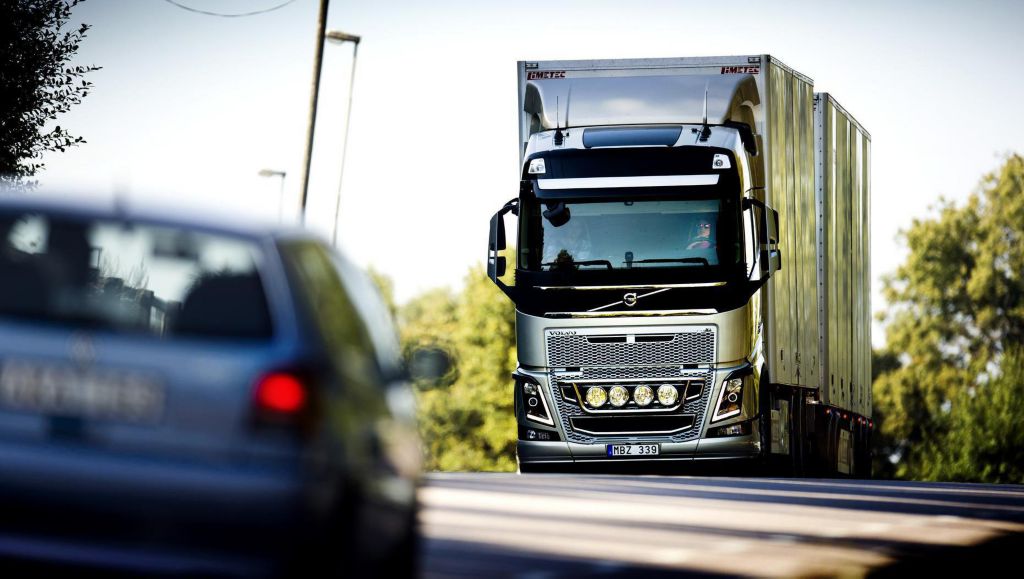Highest possible skill levels


The new, silver-coloured Volvo FH has just arrived at Jardlers Åkeri in the town of Lindesberg in central Sweden. The brand-new truck glistens in the sun and Henrik Carlzon, the company’s fleet manager, is delighted.
“This is our second new Volvo FH. It feels fantastic!” he says.
Jardlers Åkeri is a company with a long history. It began operating back in 1931.
Today, it is one of a number of Swedish companies which supply Volvo Trucks with truck components. In its home town of Lindesberg, wheel axles for Volvo trucks are produced and Jardlers Åkeri transports them to the truck plant in Gothenburg.
Three of the company’s nine drivers are present at today’s truck delivery. Henrik Carlzon says that this is simply taken for granted.
“The drivers need to be given detailed training on all the new functions in this truck. If something happens, we save both time and money if the driver knows what has happened to the truck.”
Henrik Svedberg, from Volvo Trucks’ dealer Tage Rejmes i Örebro Lastvagnar AB, and Andrew Low, the person responsible for Volvo Trucks’ driver training, are also present at the hand-over.
“Jardlers Åkeri is an excellent example of a haulage company that has chosen to invest in training its drivers. This is exactly the right approach. After all, it is drivers who can save the really big money by using the functions in the truck in the right way,” says Andrew Low.
We want to give something back to our drivers, who are doing an excellent job.
However, training is not simply important when it comes to learning about and understanding a new truck.
Since September 10, 2009, every truck driver in the EU must have a Driver Certificate of Professional Competence (Driver CPC). Drivers who already held a relevant vocational licence when this legislation came into force must complete 35 hours of driver training to obtain their certificates. Each individual EU member state is allowed to decide when this training needs to be completed. In Sweden, the time limit expires on September 10, 2016.
“We run one Driver CPC training course a year. In 2016, all the drivers at the haulage company will have completed their 35 hours of training,” says Henrik Carlzon.
The Driver CPC training is divided into five parts comprising effective driving, safe transport, transport industry and legislation, health, safe driving and customer focus. At Jardlers Åkeri, this training is organised in close collaboration with Volvo Trucks’ dealer, Tage Rejmes i Örebro Lastvagnar AB.
“Jardlers Åkeri has been really active when it comes to providing its drivers with the best possible training and together we have designed a training plan which includes all the different parts of the course,” explains Henrik Svedberg, the Driver CPC trainer.
According to the legislation, every driver is responsible for holding or acquiring a valid CPC.
However, Jardlers Åkeri has chosen to pay for CPC training for all the company’s drivers.
“First of all, we want to give something back to our drivers, who are doing an excellent job. Secondly, we are totally dependent on drivers with the highest possible skill levels,” says Henrik Carlzon.
The truck manufacturer, Volvo Trucks, imposes rigorous demands at every stage of the production process. To transport wheel axles to Volvo Group plants, Jardlers Åkeri needs to hold four ISO certificates in the areas of the environment, traffic, work environment and quality.
We are totally dependent on drivers with the highest possible skill levels.
“To hold these certificates, we must continually train our drivers, for example. Training is absolutely essential for us,” says Henrik Carlzon.
There is furious activity around the new truck. Andrew Low and Henrik Svedberg are demonstrating where some of the new functions in the truck are located and, as they do so, the drivers ask questions.
One of the drivers is Anna-Lena Kristoffersson. She has been working for Jardlers Åkeri for eight years.
“When you’re on the road, it’s much easier if you know how the most important new functions work,” she says.
Anna-Lena settles herself in the driver’s seat and Andrew Low shows her where the new instrument panel functions are located.
“There are quite a few new features, but I shall just have to familiarise myself with them,” she says with a smile.
Vehicles: Two Volvo FH16s developing 700 horsepower (2013), two Volvo FH16s with an output of 540 horsepower (2011), two Volvo FHs developing 480 horsepower (2009) and one Volvo FH with an output of 500 horsepower (2011).
Other applications: The four Volvo FH16 trucks are equipped with Dynafleet. The two new Volvo FH trucks are equipped with Volvo Trucks’ active safety package, ASAFE+, as well as Adaptive Cruise Control.
Fuel consumption: The two new Volvo FH16 trucks consume around 4.4 litres per 10 km. Consumption for the other two Volvo FH16s is 4.7 litres per 10 km.